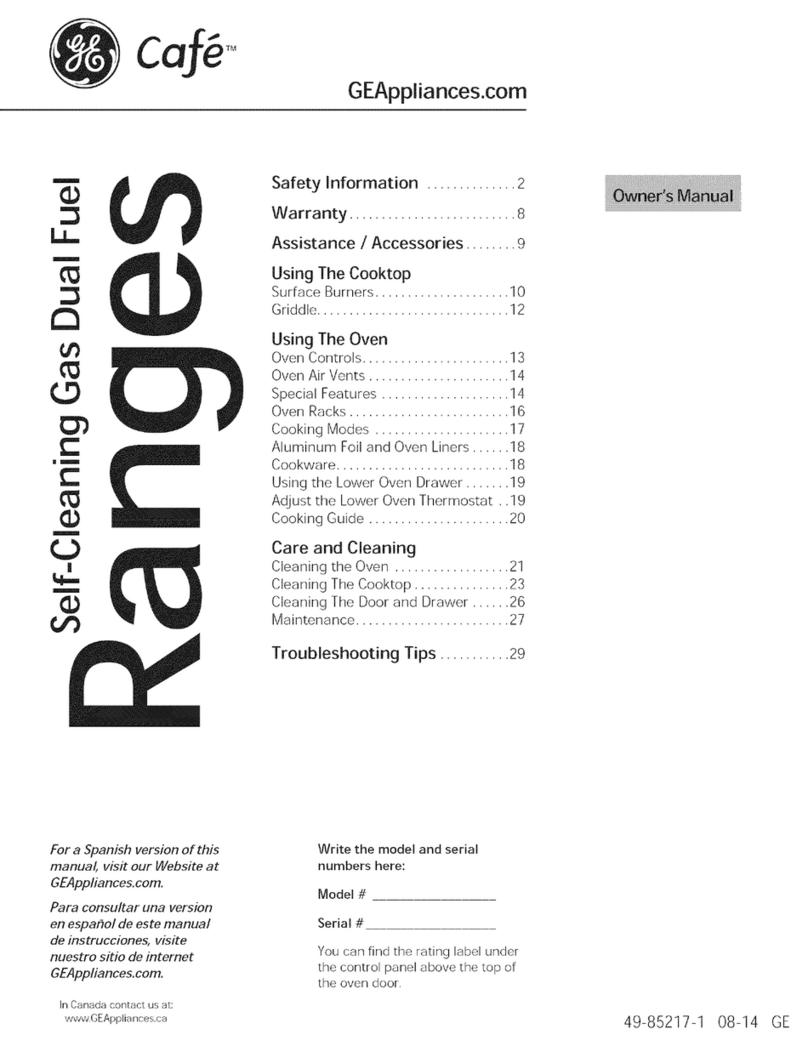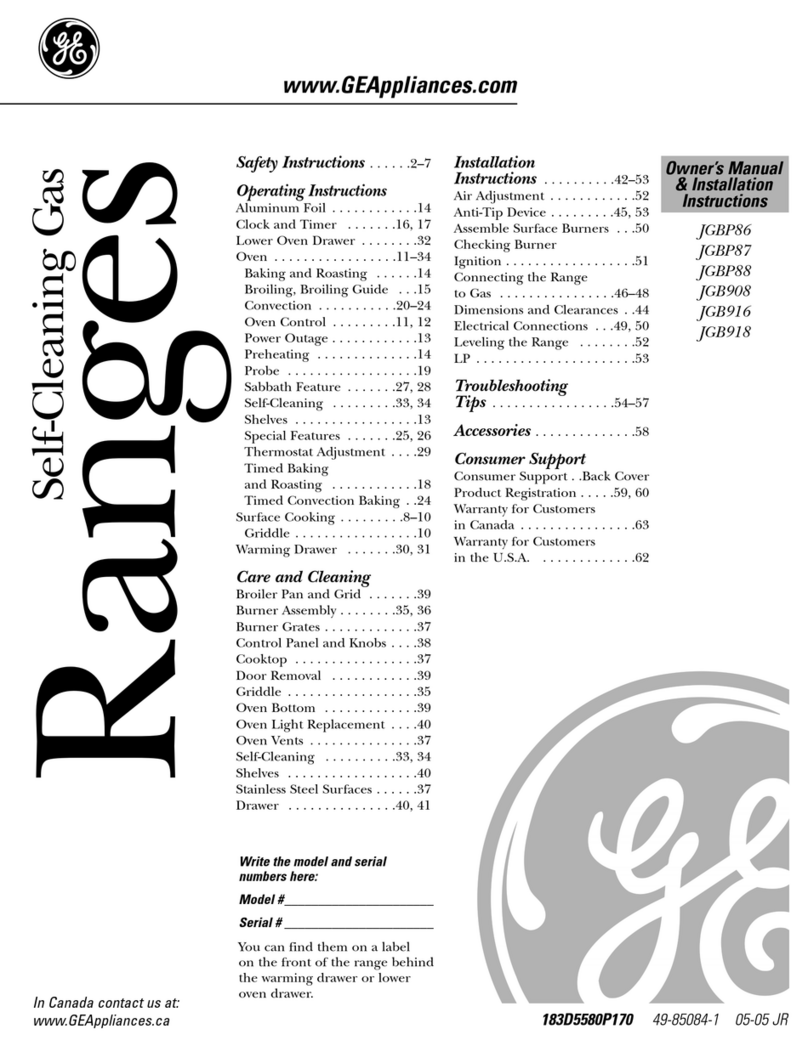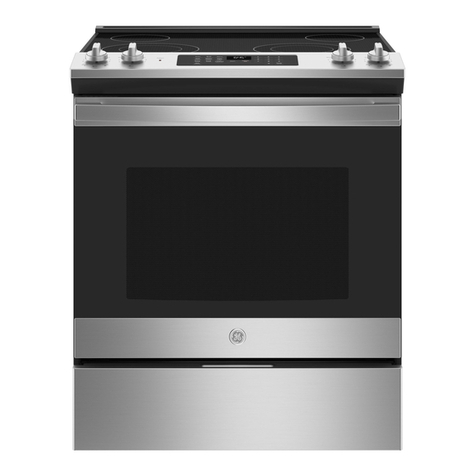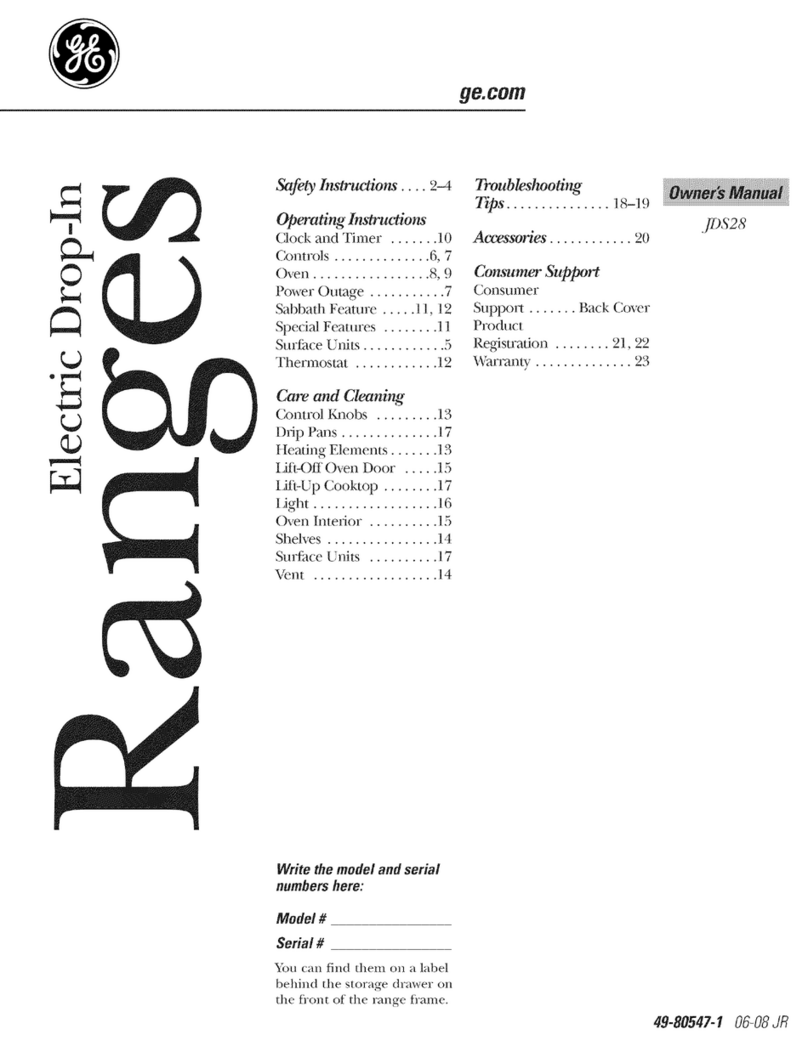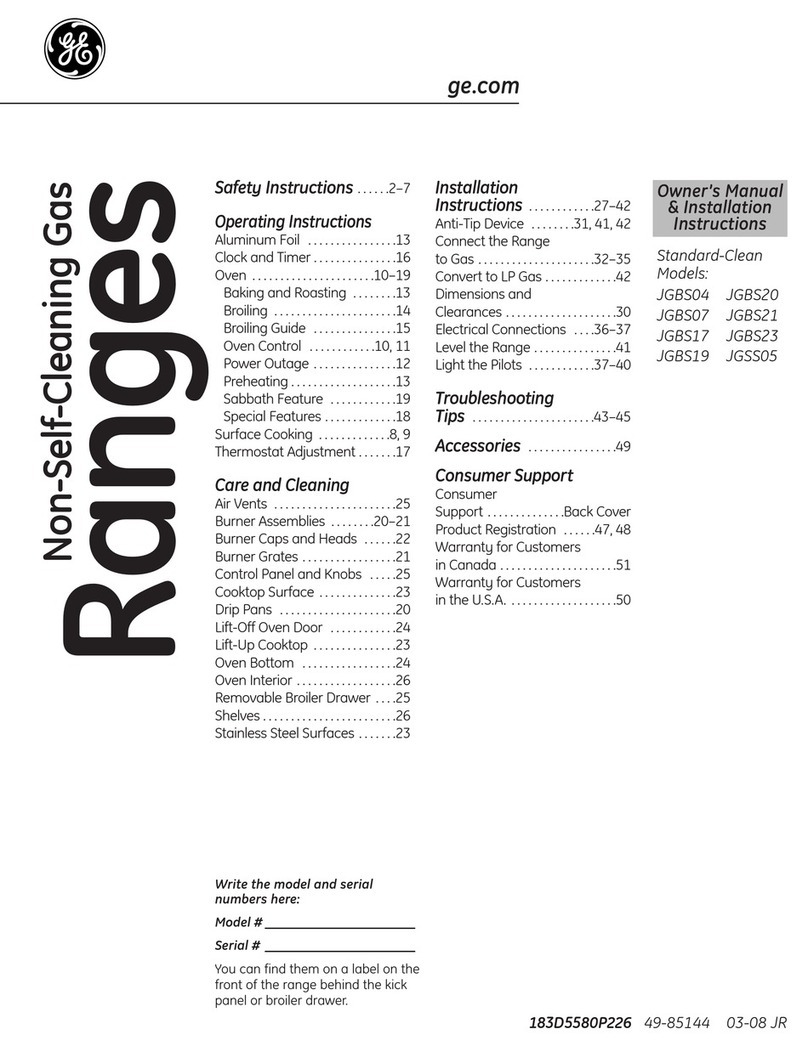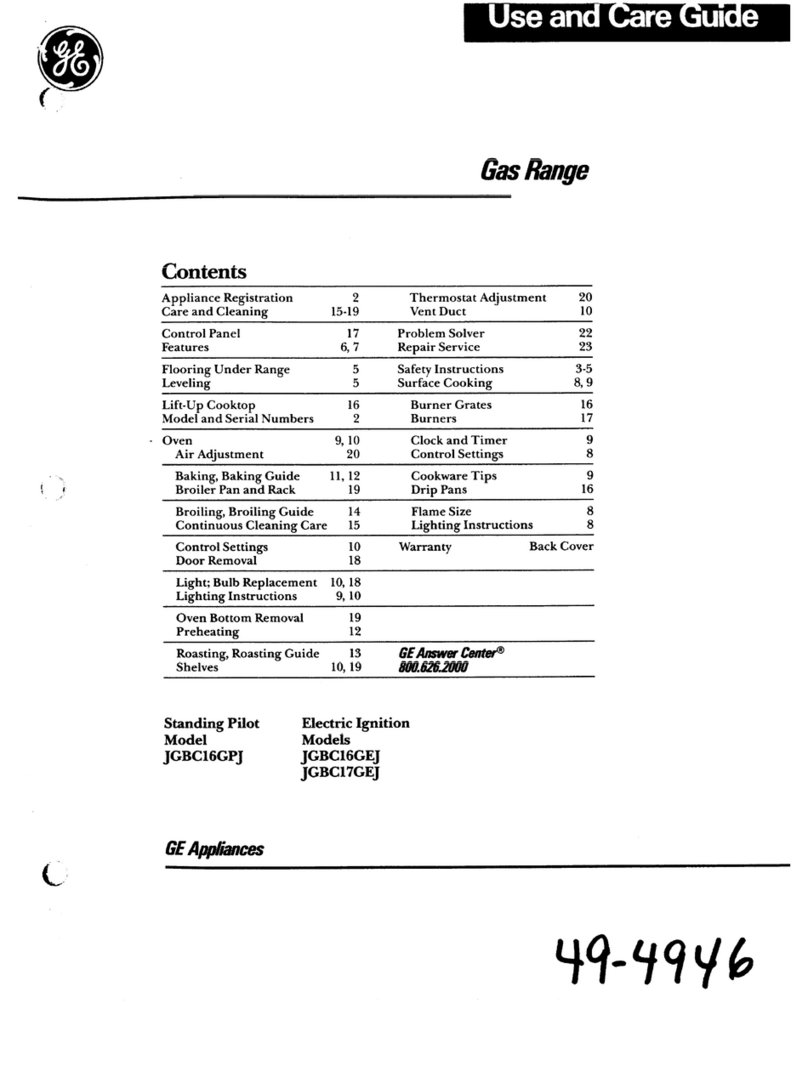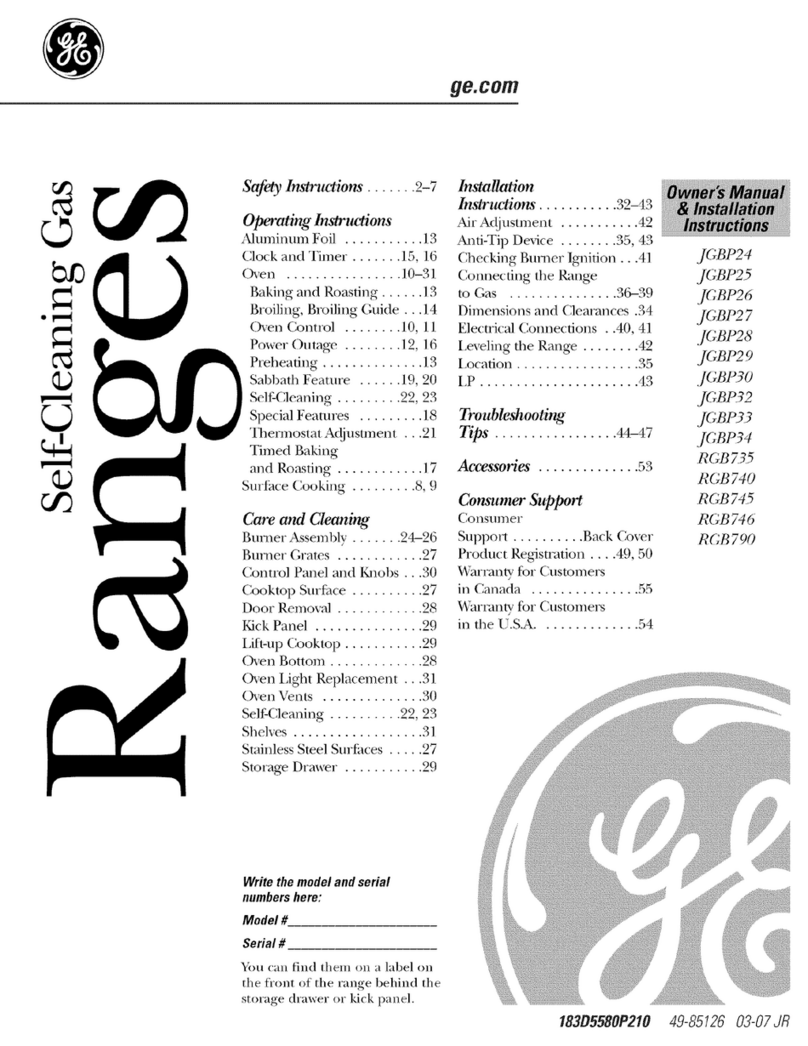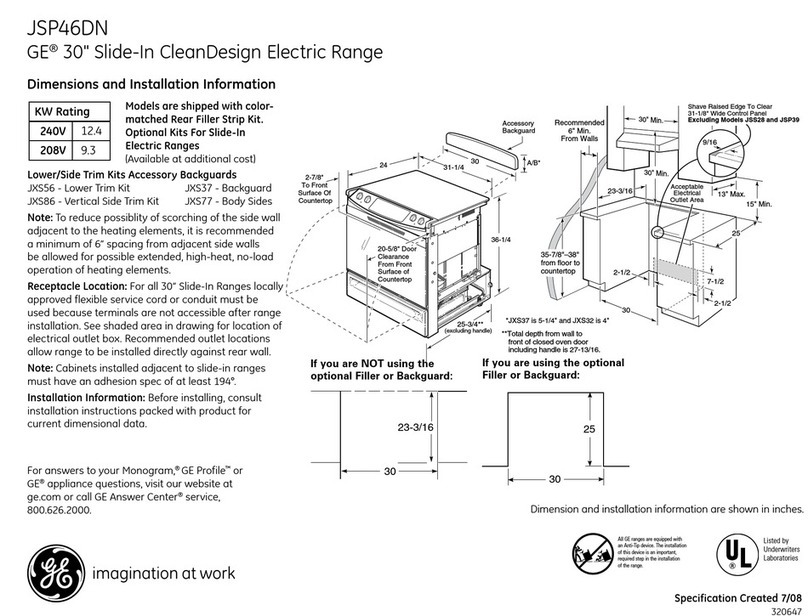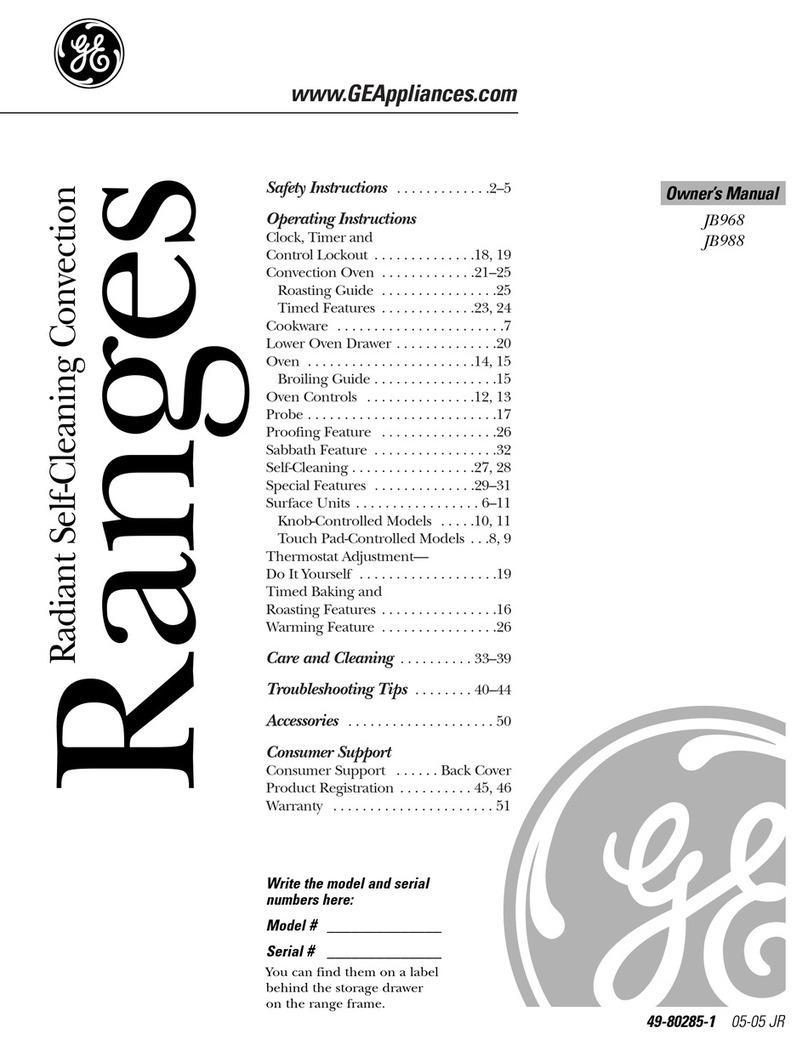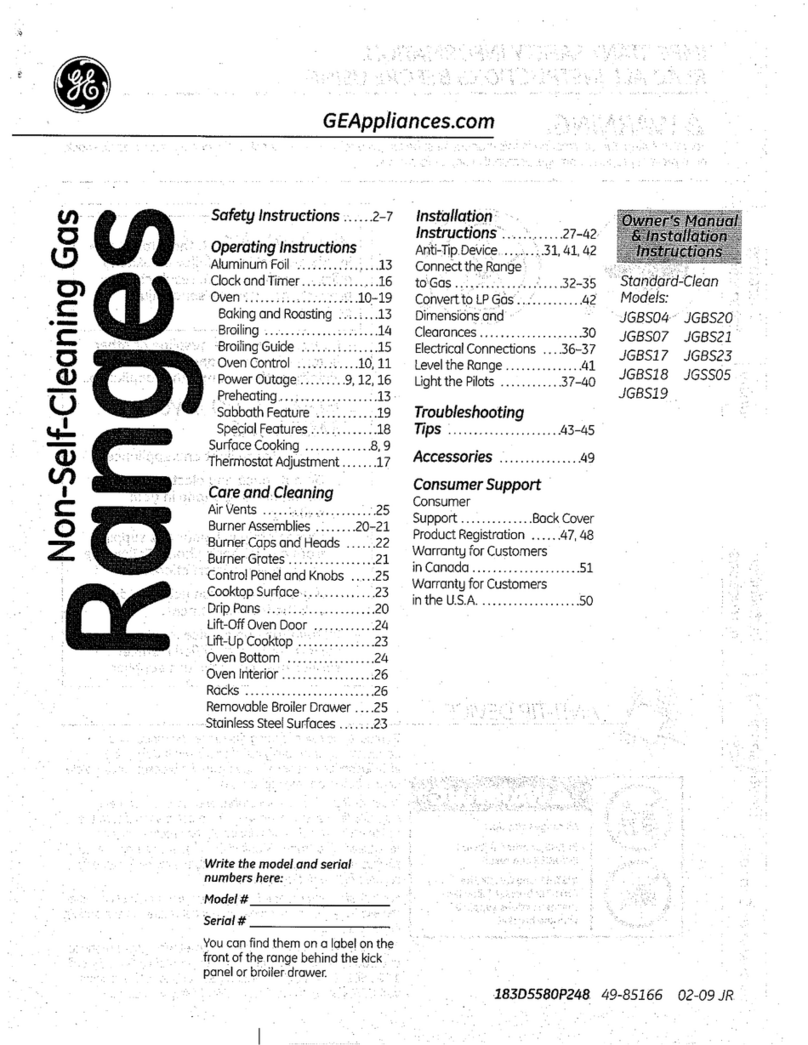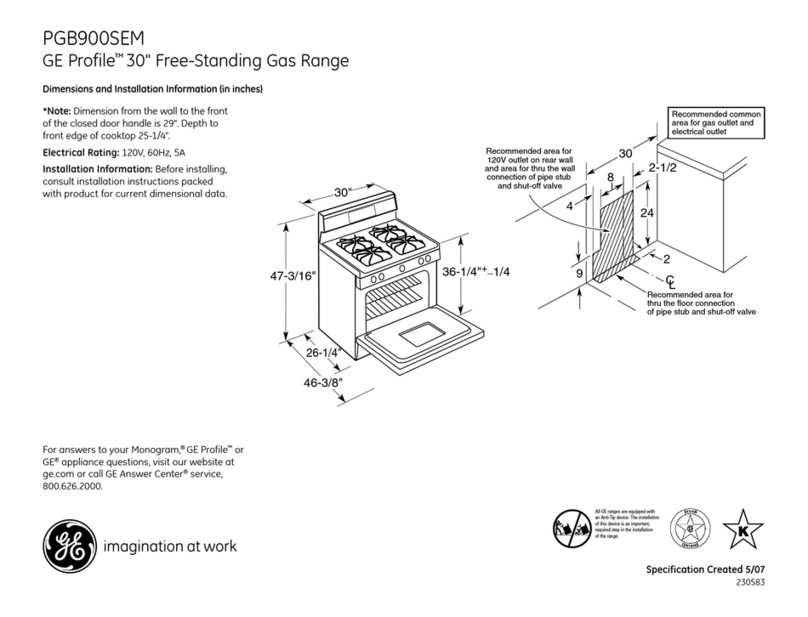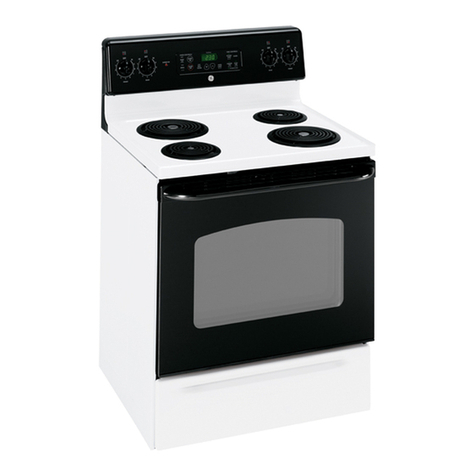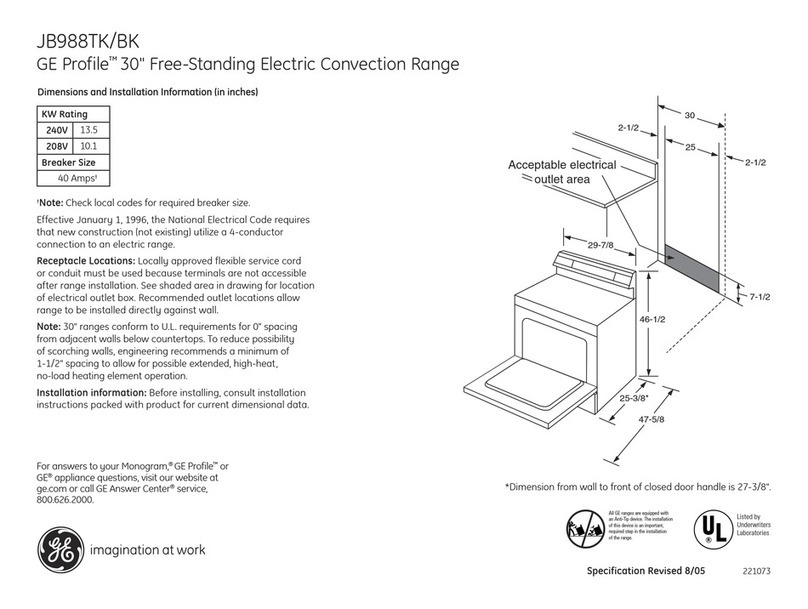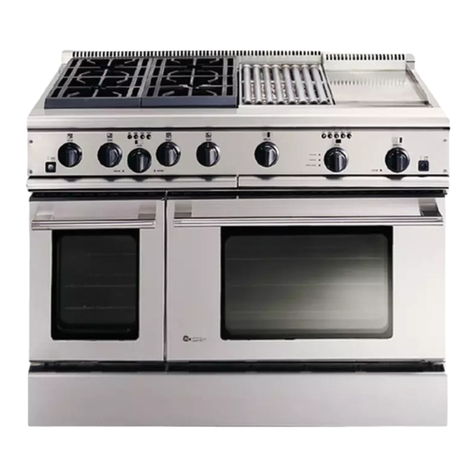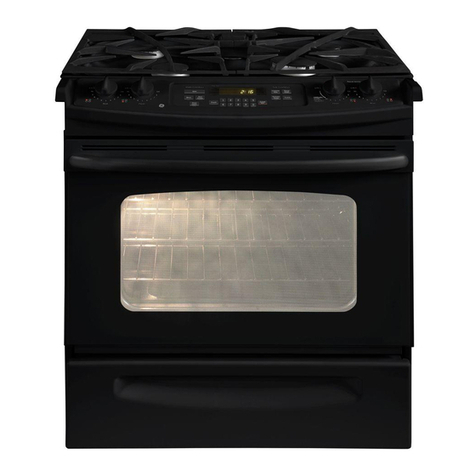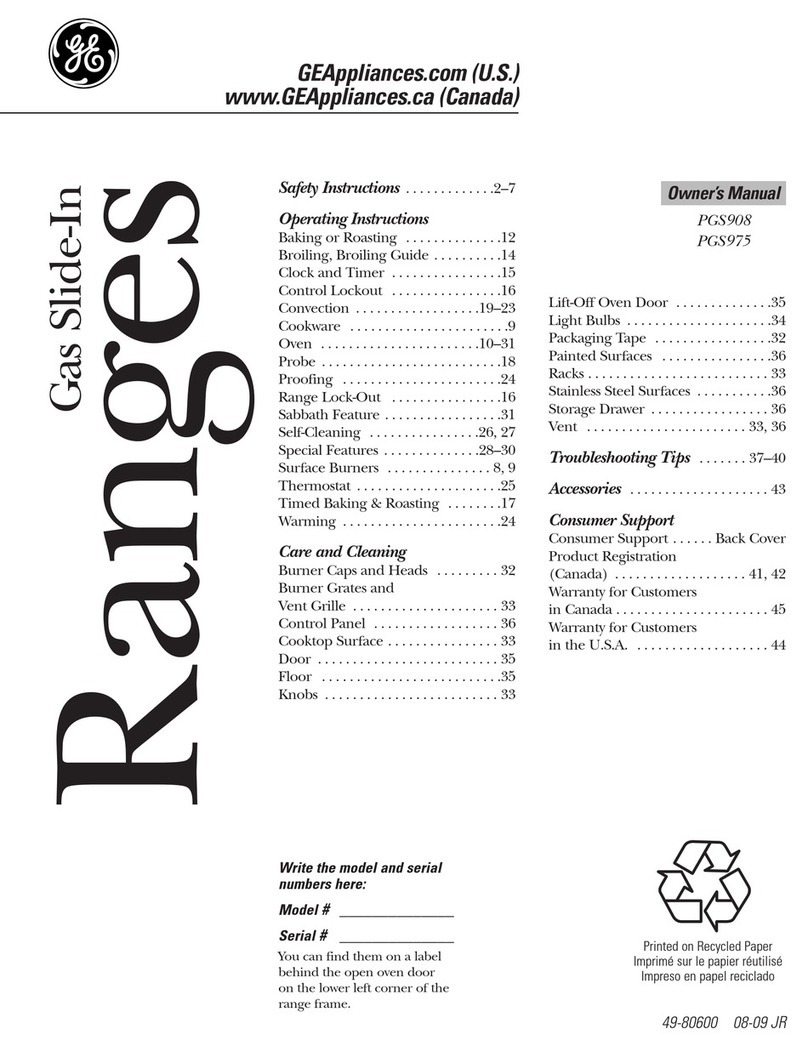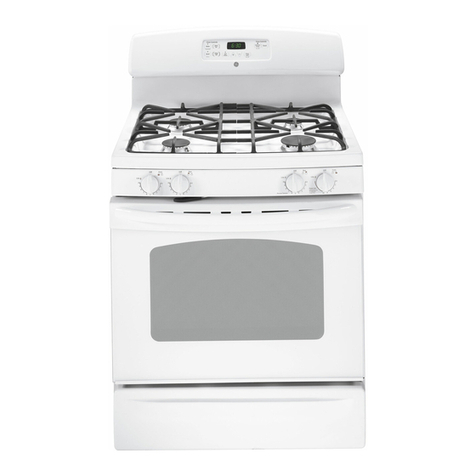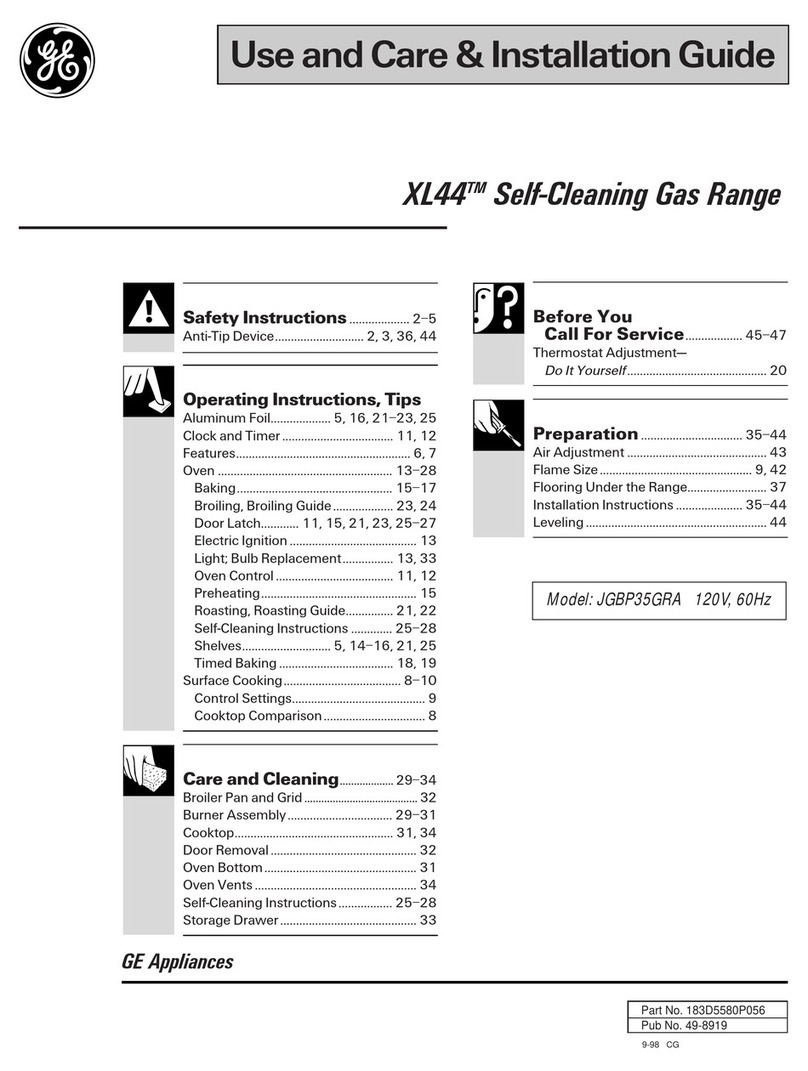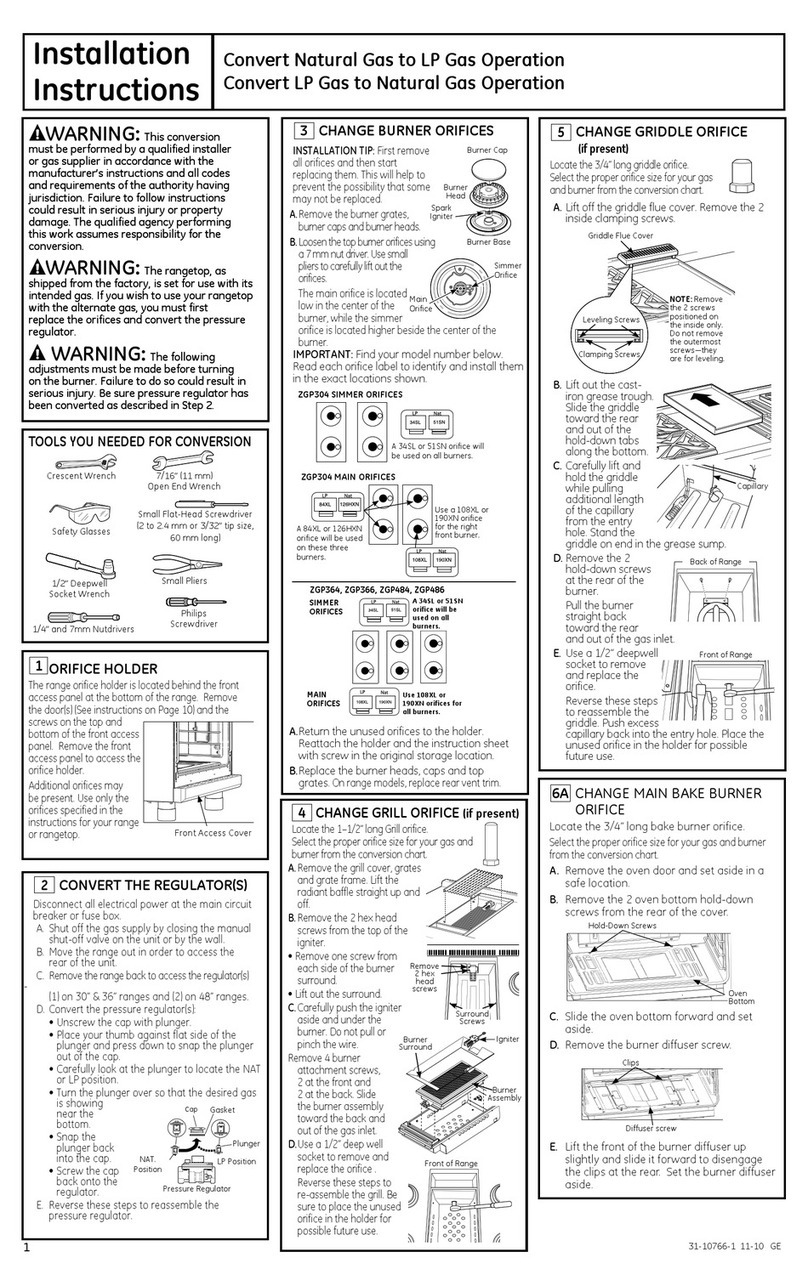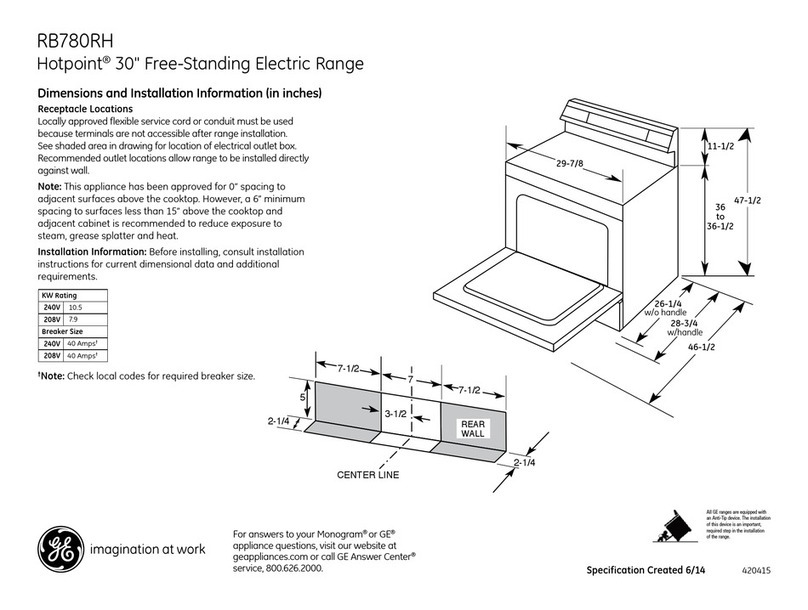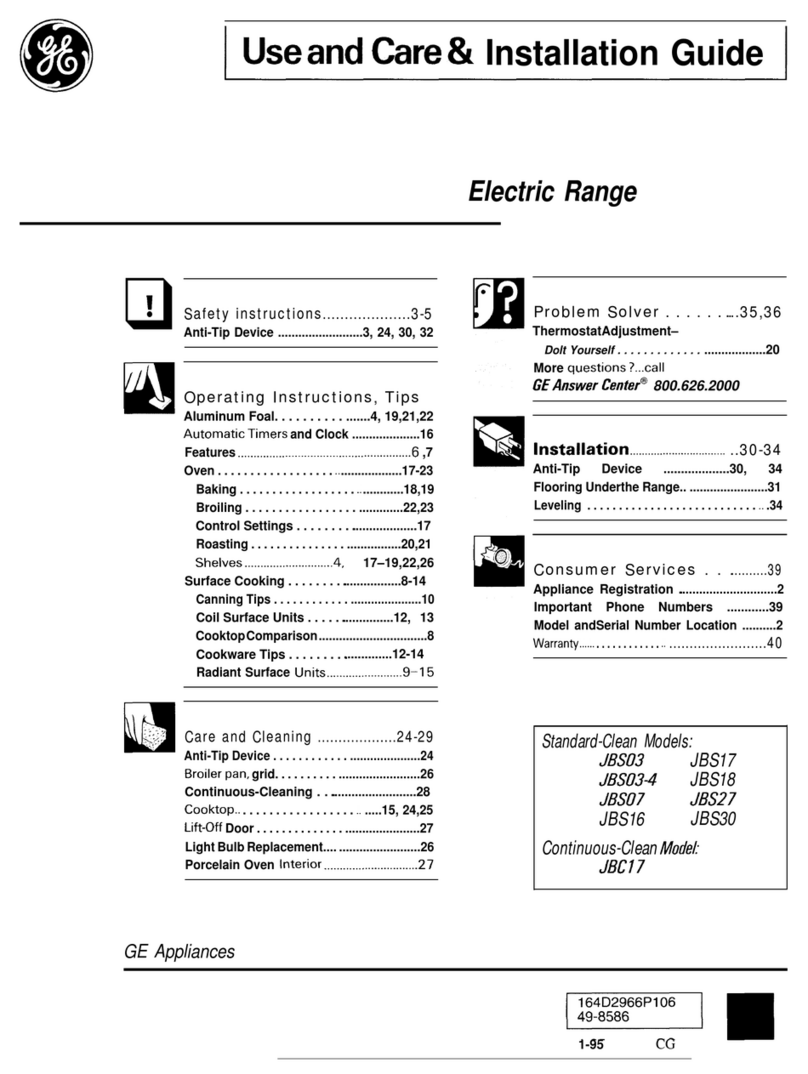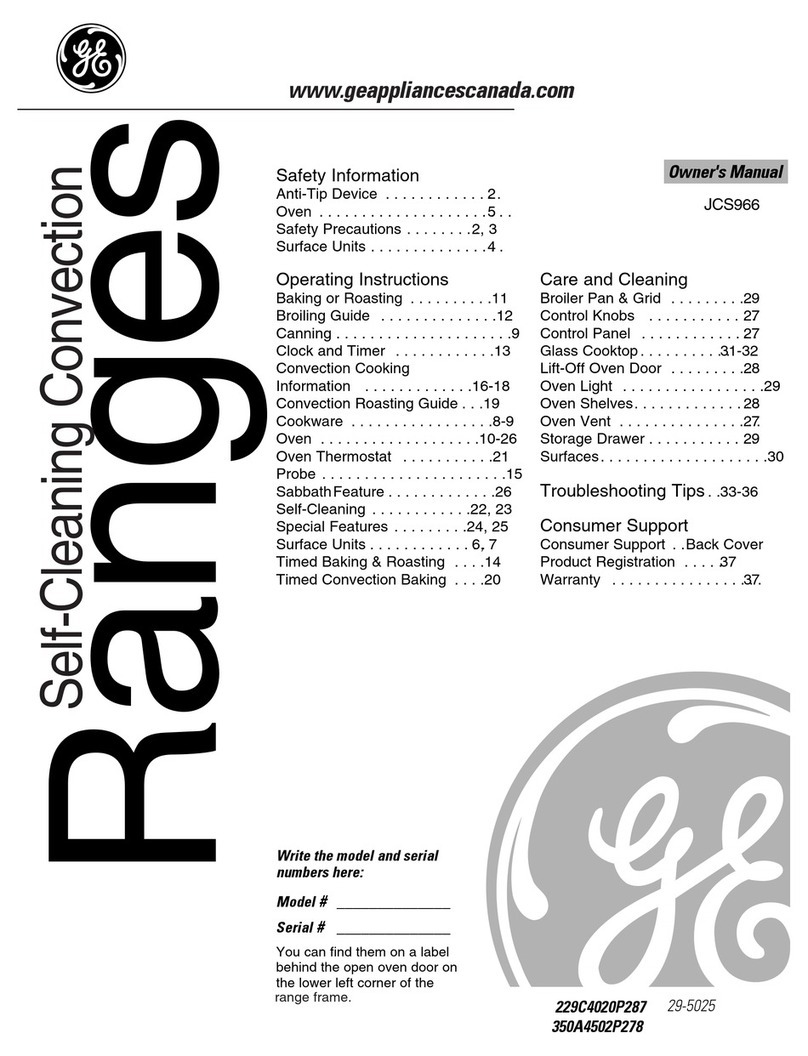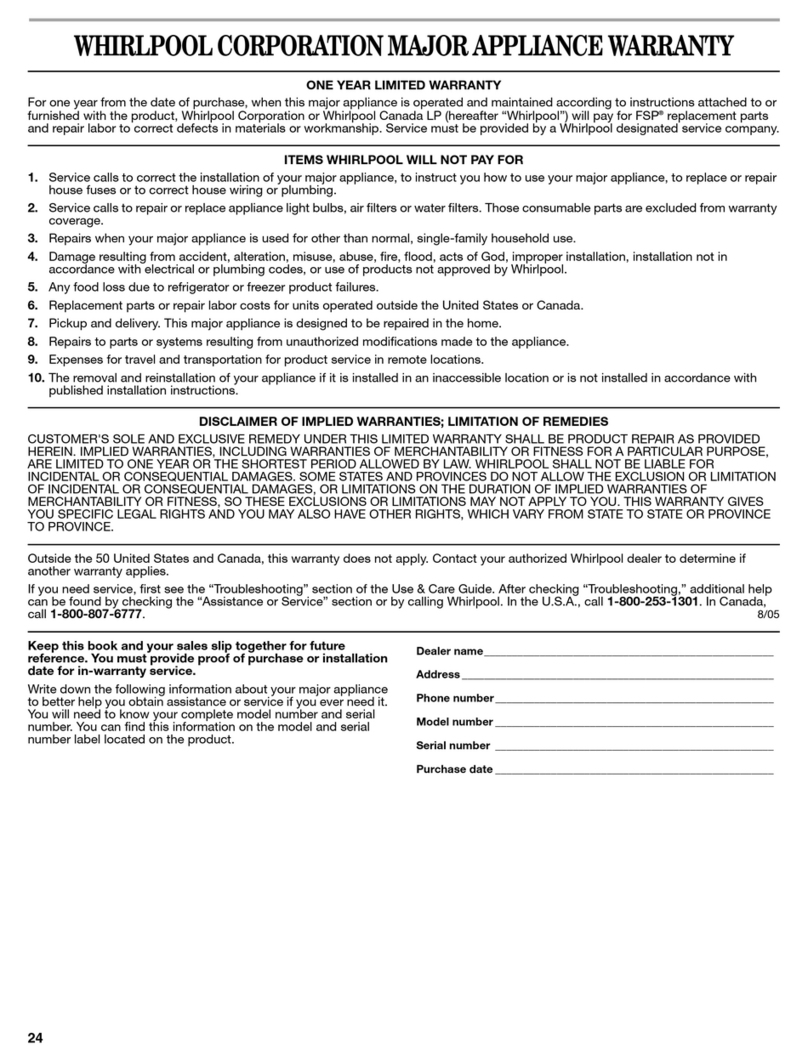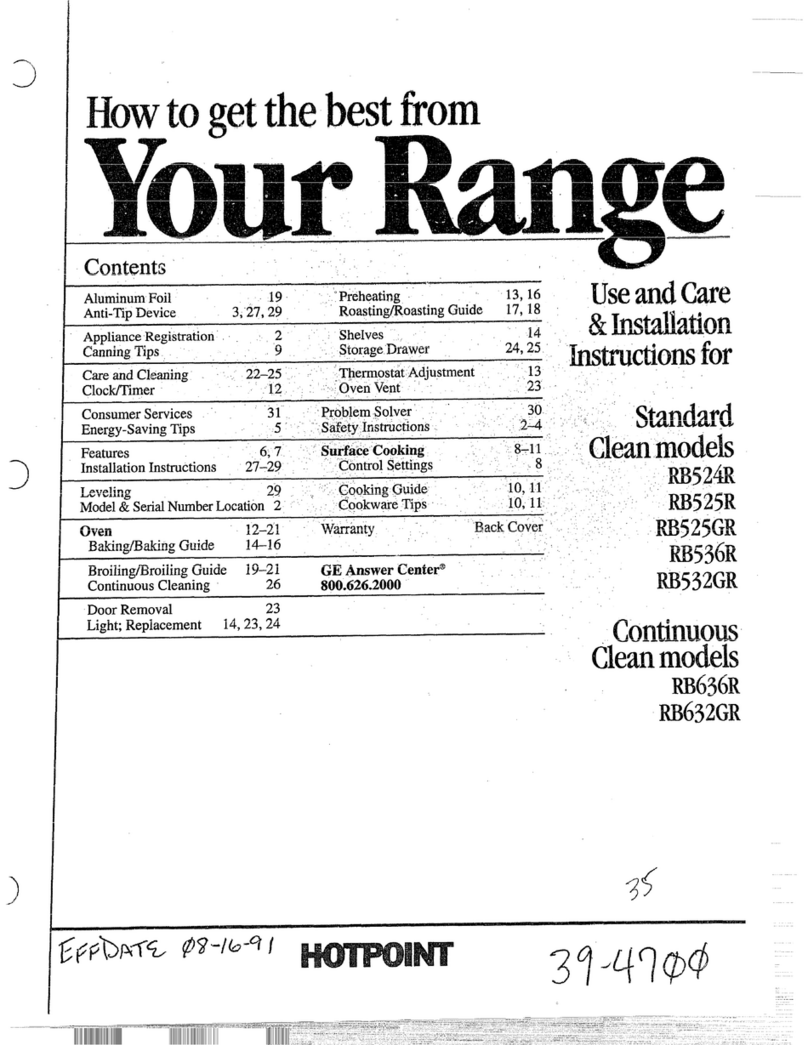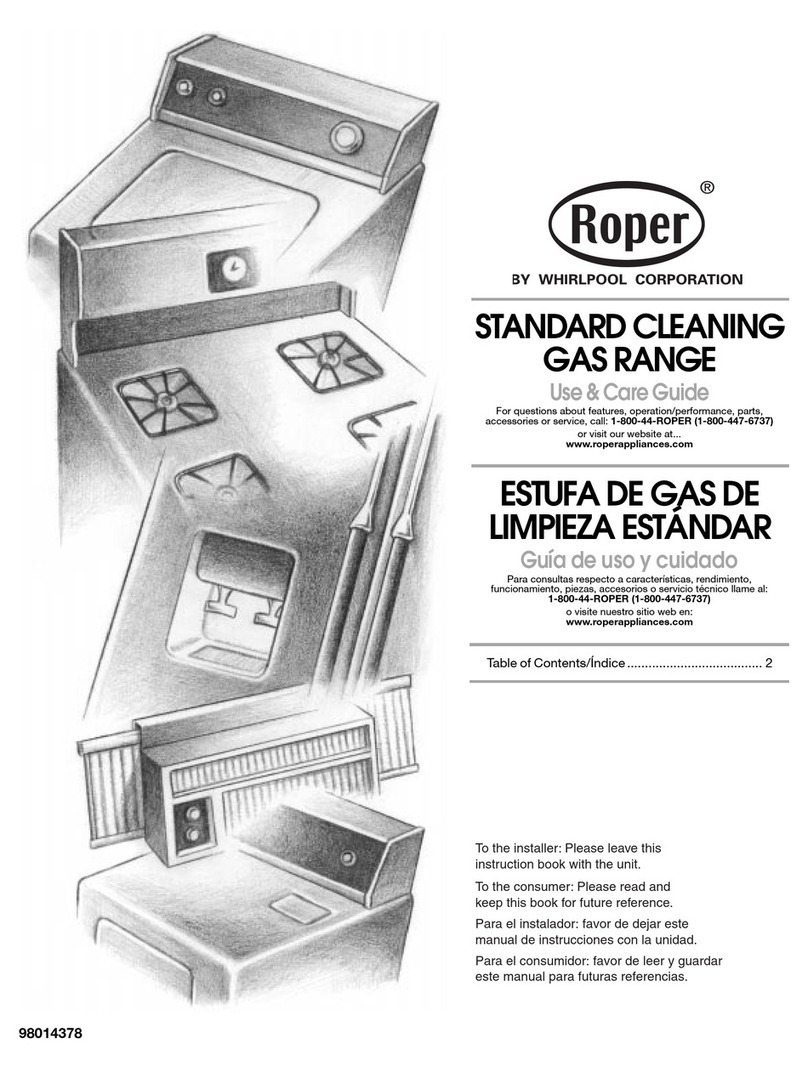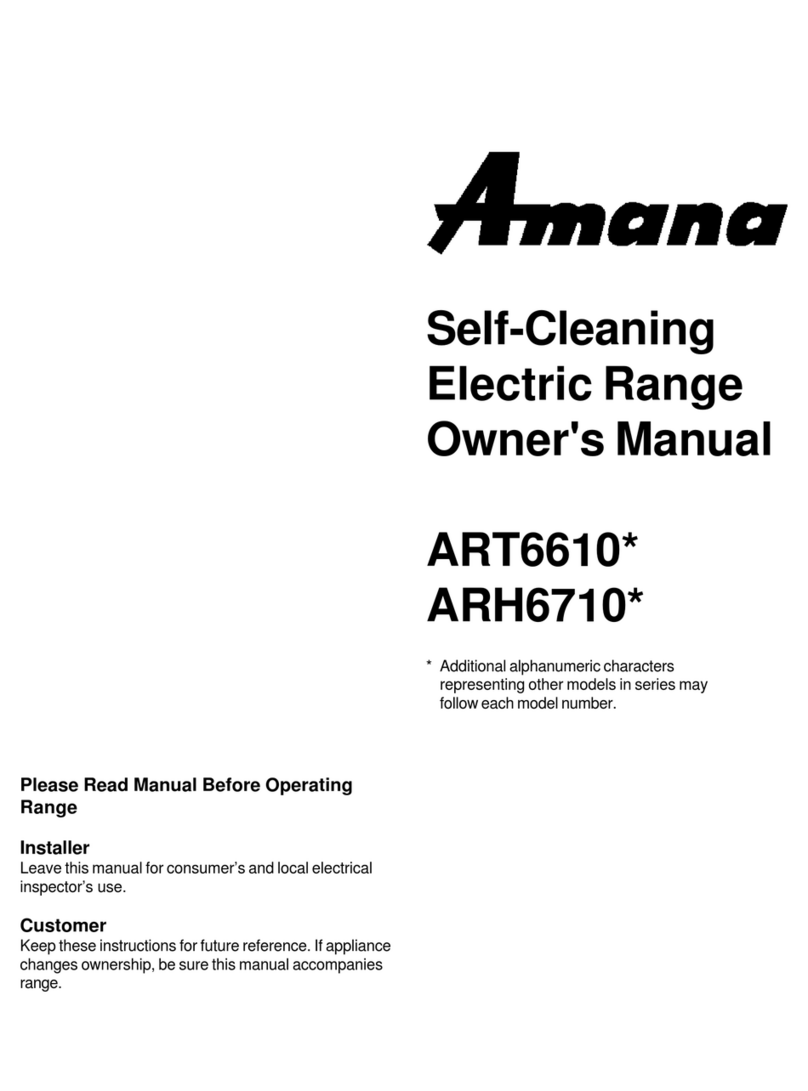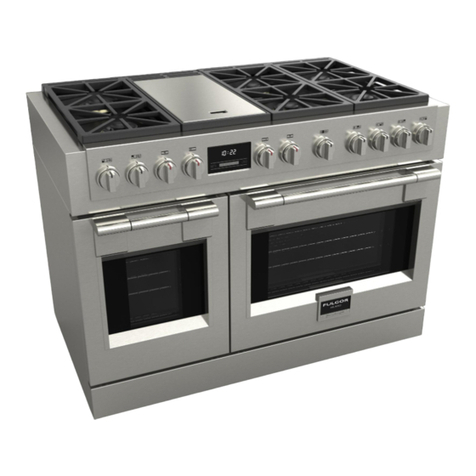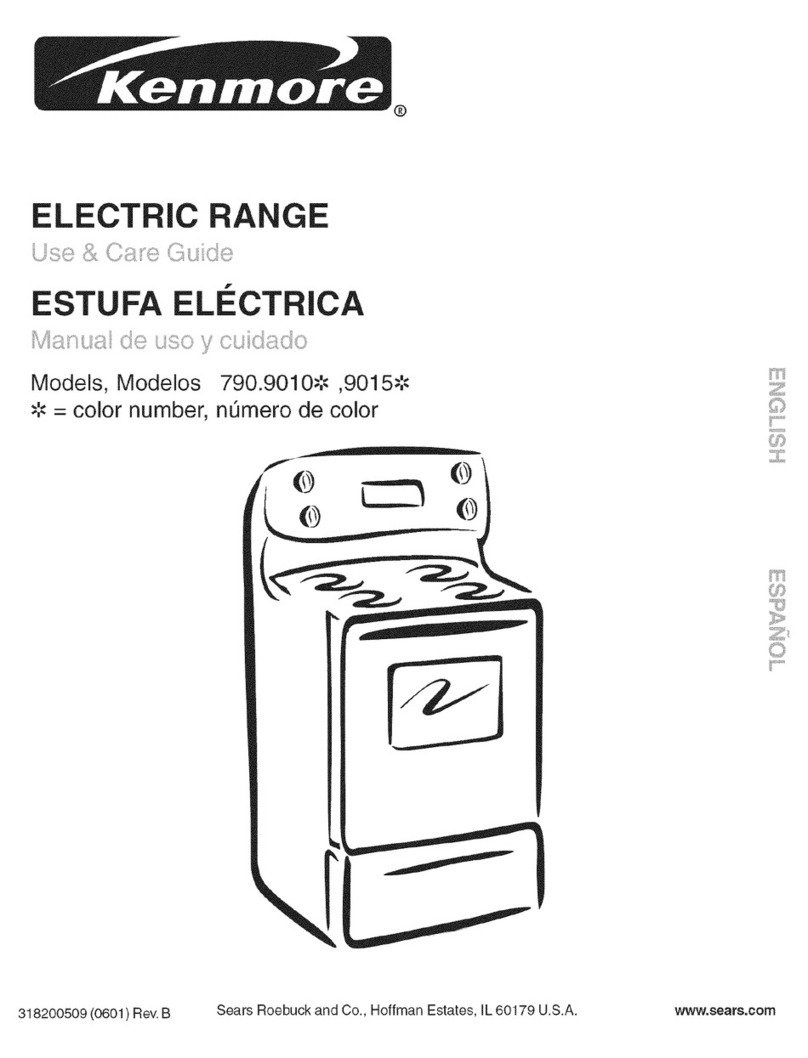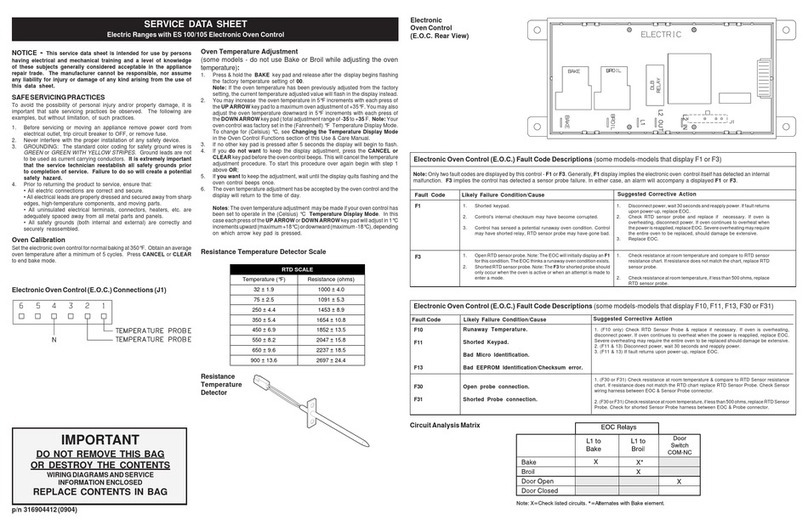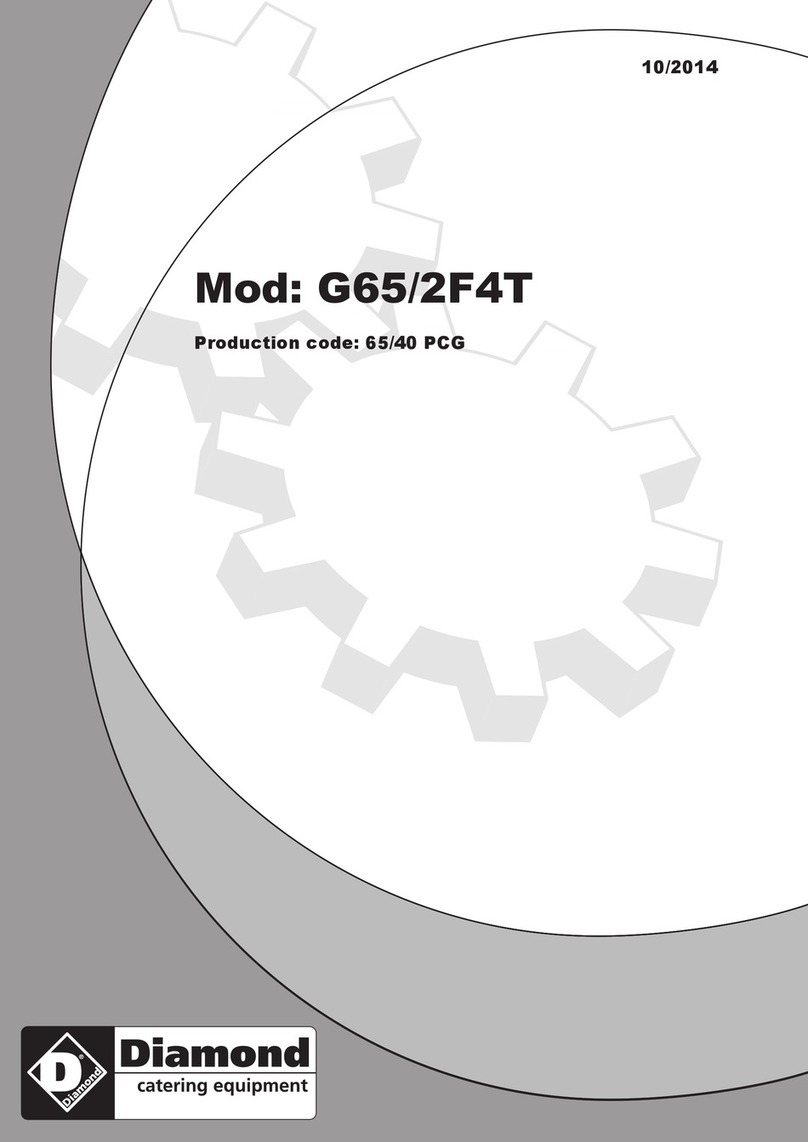IMPORTANT SAFETY INSTRUCTIONS
(cont]nued)
—
●
Keep the hood and grease filters
clean to
maintain good venting and to avoid grease fires.
●
Do not let cooking grease or other flammable
materials accumulate in or near the
range.
e
●
Do not use water on grease fires.
4!
$
jf
Never pick up a flaming pan.
Smother
flaming pan on surface unit by covering
pan completely with well-fitting lid, cookie sheet
or flat tray, or if available, use a multi-purpose dry
chemical or foam-type extinguisher.
Flaming grease outside a pan can be put out
by covering with baking soda or, if available,
a multi-purpose dry chemical or foam-type fire
extinguisher.
Flame in the oven can be smothered completely
by closing the oven door and turning the oven
OFF or use a dry chemical or foam-type
extinguisher.
●
Do not touch the surface units, the heating
elements or the interior surface of the oven.
These surfaces may be hot enough to burn even
though they are dark in color. During and after
use, do not touch, or let clothing or other
flammable materials contact the surface units, the
areas nearby the surface units or any interior area
of the oven; allow sufficient time for cooling first.
Potentially hot surfaces include the cooktop, areas
facing the cooktop, oven vent opening, surfaces
near the opening, crevices around the oven door,
the edges of the door window and metal trim parts
above the door.
Remember:
The inside surface of the oven may
be hot when the door is opened.
●
When cooking pork,
follow the directions
exactly and always cook the meat to an internal
temperature of at least
170”F.
This assures that, in
the remote possibility that trichina may be present
in the meat, it will be killed and the meat will be
safe to eat.
Oven
●
Stand away from the range when opening the
oven door. Hot air or steam which escapes can
cause burns to hands, face and/or eyes.
●
Do not heat unopened food containers.
Pressure could build up and the container
could burst, causing an injury.
●
Keep the oven vent duct unobstructed.
●
Keep the oven free from grease buildup.
●
Place the oven shelf in the desired position
while the oven is cool.
If the shelves must be
handled when hot, do not let a pot holder contact
the heating elements in the oven.
●
Pulling out the shelf to the shelf stop is a
convenience in lifting heavy foods. It is also
a precaution against burns from touching hot
surfaces of the door or oven walls.
●
After broiling, always take the broiler pan out
of the range and clean it.
Leftover grease in the
broiler pan can catch on fire next time YOU
use
–
the pan.
●
When using cooking or roasting bags in the
oven,
follow the manufacturer’s directions.
●
Do not use your oven to dry newspapers.
If overheated, they can catch fire.
●
Do not leave paper products, cooking utensils,
or food in the oven when not in use.
Do not
store flammable materials in an oven or near the
surface units.
Self-Cleaning Oven
●
Do not clean the door gasket.
The door gasket
is essential for a good seal. Care should be taken
not to rub, damage or move the gasket.
●
Clean only parts listed in this Use and
Care Guide.
●
Do not use oven cleaners. No
commercial
oven cleaner or oven liner protective coating
of any kind should be used in or around any part
of the oven. Residue from oven cleaners will
damage the inside of the oven when the self-clean
cycle is used.
4
